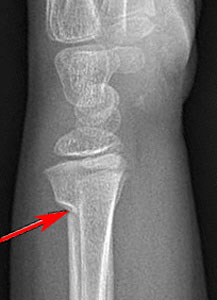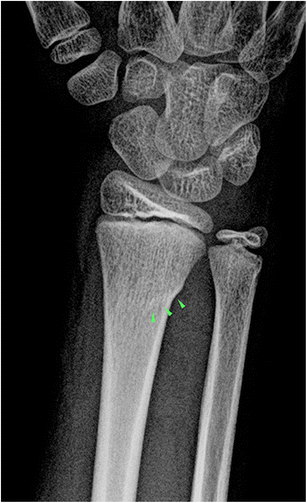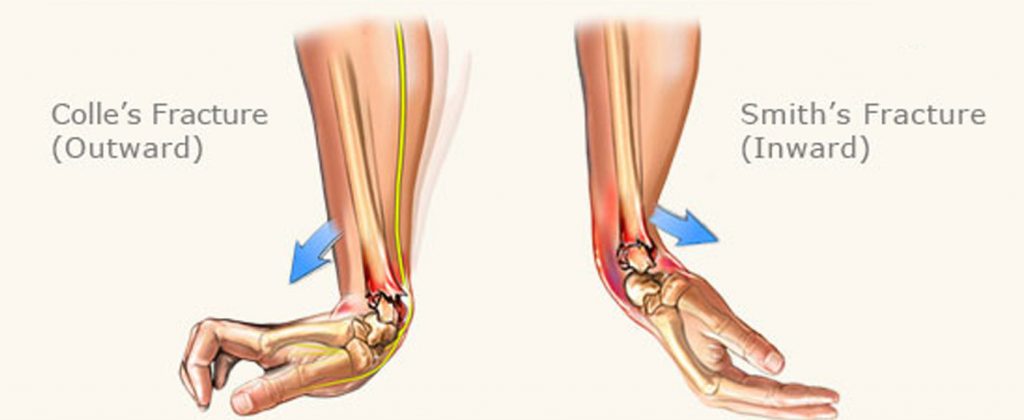
If any (or all) of these symptoms present themselves after falling clumsily into some furniture legs (we’ve all been there!), don’t hesitate to see an expert physician right away. How do you know if what happened is just another sprain or something worse? Keep an eye out for these tell-tale signs: It’s called by that name because unlike typical bone breaks where the bone separates completely – making it harder to align them back correctly -, when you experience buckle fractures, the bones tend to remain aligned but become compressed on one side resulting from trauma of force applied during impact. What is Buckle Fracture?īuckle fractures are also commonly known as torus fractures or the bend-but-don’t-break fracture.
Buckle fracture wrist healing time how to#
In this guide, we’ll teach you how to treat a buckle fracture in your wrist like it’s nothing more than getting an errant popcorn kernel out of your teeth. Distal radius fractures in children: Substantial difference in stability between buckle and greenstick fractures.Don’t panic. How should I care for my plaster cast? (2015, March 17).You can learn more about how we ensure our content is accurate and current by reading our editorial policy. We link primary sources - including studies, scientific references, and statistics - within each article and also list them in the resources section at the bottom of our articles.

Medical News Today has strict sourcing guidelines and draws only from peer-reviewed studies, academic research institutions, and medical journals and associations. there is an unpleasant smell or discharge coming from underneath the cast.
Buckle fracture wrist healing time skin#

no heavy lifting or, in the case of adult patients, driving while wearing the cast.try not to get powders and creams inside the cast.exercise any joints that are not covered by the cast to improve circulation.The British National Health Service (NHS) offer some top tips for living with a cast: It can be uncomfortable to wear a cast, particularly if it is for a relatively long time. People should speak with their orthopedic surgeon before doing this. Turning a hair dryer onto a cold setting and blowing underneath the cast may help but needs to be done very carefully without any heat so as to prevent damage to the skin. The skin under the cast may feel itchy for the first few days, but doctors advise not to put anything inside the plaster to scratch, as it may cause a sore. When showering, a plastic bag can be wrapped around the cast and secured with an elastic band to protect it. It is important to keep a fiberglass cast dry and clean as well to prevent softening and breaking down of the skin. Share on Pinterest The skin under the cast may be itchy, but will improve after the first few days.Īnyone wearing a cast will need to take care not to get it wet as this will weaken the plaster and its ability to keep the bones straight. When this occurs, the patient will need to have more X-rays in the first 7 to 10 days after the break, to make sure the bones stay lined up. The doctor will do this, and depending on how severe the deformity is, the procedure may be carried out under sedation or general anesthesia. In the unlikely event that the bone has been angled, or bent out of shape, it may need to be reset to get better alignment. A soft inside layer protects the skin and soft tissue, and a hard layer holds the bones in place so that it can heal.įor children, the usual healing time for a bone is 3 to 6 weeks but may take longer based on the child’s age, and they will need to wear their cast for the whole time. However, if there is no or minimal swelling, a cast may be applied immediately.Īfter any severe swelling has subsided, a plaster or fiberglass cast is then put on. A splint is usually put on first, which keeps the limb in place for the first few days until the swelling goes down.

In most cases, a buckle fracture is treated with a splint and cast. Share on Pinterest A plaster or fiberglass cast will be used to keep the bones in place while they heal.


 0 kommentar(er)
0 kommentar(er)
